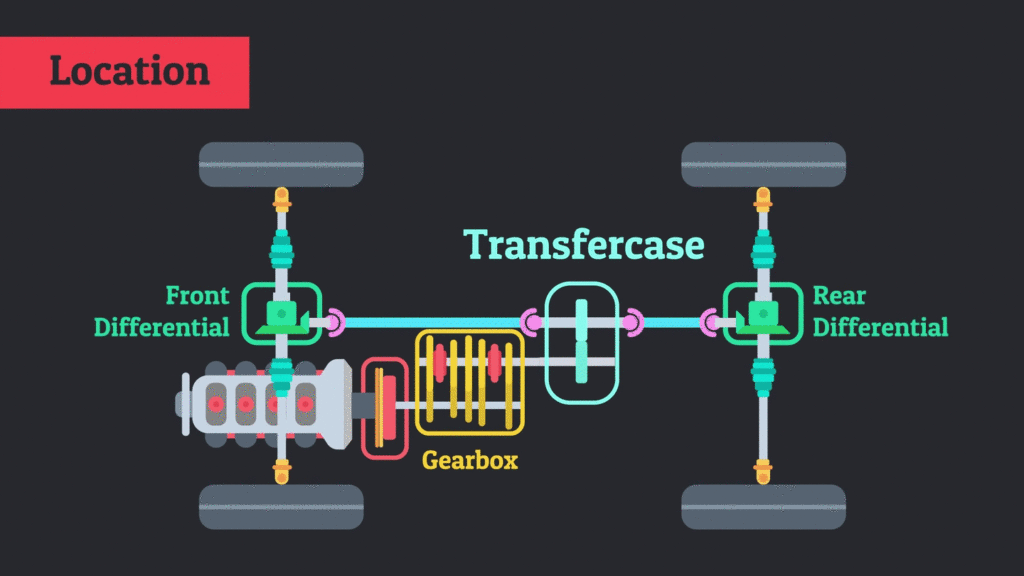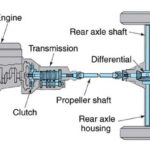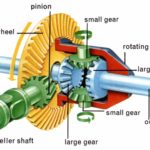The differential is found on all modern cars and trucks, and also in many all-wheel-drive (full-time four-wheel-drive) vehicles. These all-wheel-drive vehicles need a differential between each set of drive wheels, and they need one between the front and the back wheels as well, because the front wheels travel a different distance through a turn than the rear wheels.

Part-time four-wheel-drive systems don’t have a differential between the front and rear wheels; instead, they are locked together so that the front and rear wheels have to turn at the same average speed. This is why these vehicles are hard to turn on concrete when the four-wheel-drive system is engaged.
The Advantages & Disadvantages of All Wheel Drive
All Wheel Drive (or AWD) is a system in which all four wheels of a car operate simultaneously to improve traction and handling. While it is possible for a car to have continuous AWD capabilities, it is far more common for one pair of wheels to engage only when sensors detect that the other pair has begun to slip. There are both advantages and disadvantages to AWD systems
1.Traction
In intermittent AWD systems, the rear wheels engage when sensors detect slippage from the front wheels. Under these circumstances, the vehicle effectively detects and compensates for dangerous driving conditions such as standing water, snow, ice or gravel that could otherwise compromise control of the vehicle. By engaging the second set of wheels, the vehicle experiences two additional points of contact on the surface of the road, allowing greater likelihood that its tires will grip the surface and allow the driver to retain control. The additional weight of AWD systems also encourages more grip on the road and the added points of contact distribute the vehicle’s weight more evenly over points of propulsion.
2. Fuel Efficiency
The primary disadvantage of an AWD vehicle is its cost. The drive train and related equipment necessary to provide both continuous and intermittent AWD is complex and expensive, often requiring sensors and computers that are not necessary on two- or four-wheel-drive vehicles. This cost increases the initial market value of the vehicle and can also affect the cost of repairs. In addition to these costs, AWD systems require more fuel to power the additional wheels and are less fuel efficient than comparable two-wheel-drive vehicles.
3.Braking Distance and Collision Avoidance
While the weight of AWD vehicles improves their handling, it also increases the distance they require to stop. In a scenario where the vehicle must make a sudden stop and cannot swerve or turn, a collision becomes more likely than with a lighter car. Under similar circumstance, but ones in which an accident can be avoided by turning, AWD vehicles offer superior collision avoidance than similar vehicles with less effective handling and turning capabilities.


